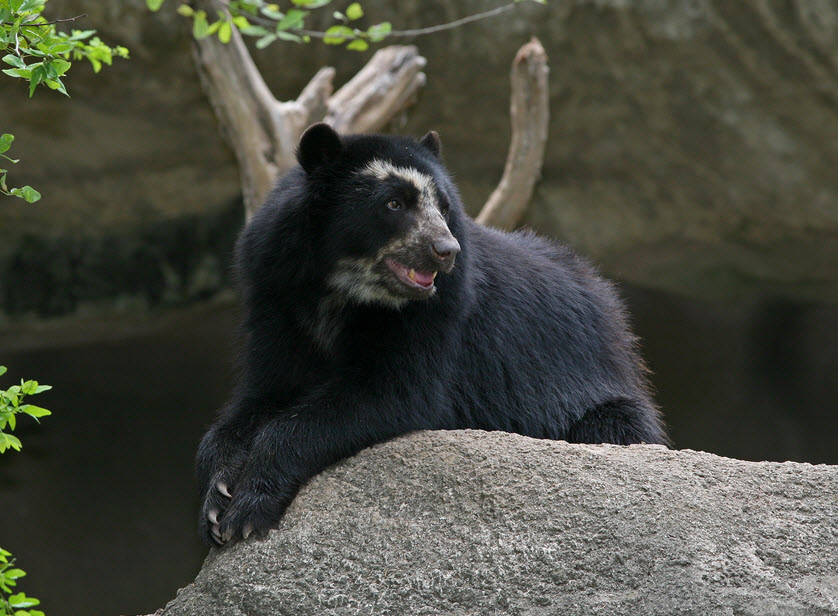
Spectacled Society: Although the bears tend to isolate themselves from one another to avoid competition, they are non-territorial. They are more rarely found in lowland rainforest and the dry, coastal forests on the Peru-Ecuador border. Being an arboreal bear, the Spectacled Bear lives mostly in dens near high canopy tropical rainforests, or occasionally in the surrounding trees to avoid danger of predatory mammals.Įager Climbers: The young bears have an instinctive urge to climb trees, rocks, and cliffsides from birth as the inordinately protective mother teaches it to reach the highest and most nutritious foods.Ĭloud Forests: Spectacled Bears are most closely associated with high altitude Andean cloud forests above 2,000 m, where epiphytic bromeliads form a major part of their diet.

They are nocturnal and crepuscular, and do not hibernate (though they will den up in inclement weather). Habitat and Home: The bears make their habitat around the Andes tropical basin, where an abundance of water and vegetation provides an adequate supplement to their very basic dietary needs of roots, leaves, shoots, berries, occasionally insects, rodents and carrion. Spectacled bears are the only surviving species of bear native to South America, and the only surviving member of the subfamily Tremarctinae. They are found in several areas of northern and western South America, including western Venezuela, Colombia, Ecuador, Peru, western Bolivia, northwestern Argentina, and southern Panama.

Just the Facts: Males can weigh up to 130 kg, and females 60 kg. Their survival has depended mostly on their ability to climb even the highest trees of the Andes and the Amazonian rainforests. Next to the Giant Panda theyĪre the most endangered species of bear in the world.

It has black fur with a distinctiveīeige-coloured marking across its face and upper chest. The Spectacled Bear ( Tremarctos ornatus), also known as the Andean Bear, is a small species of bear native to South America.


 0 kommentar(er)
0 kommentar(er)
